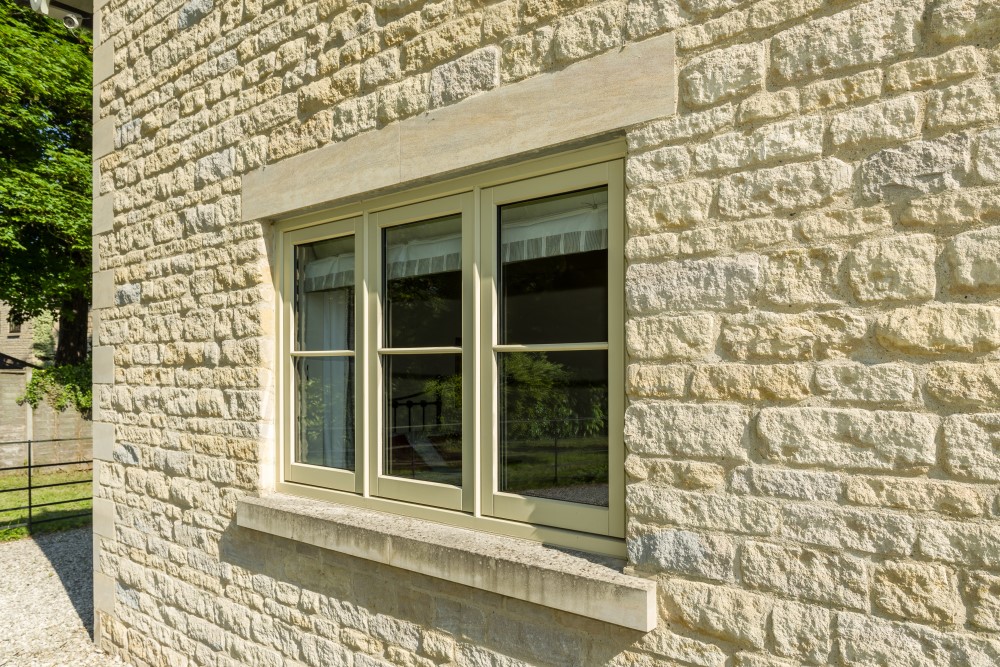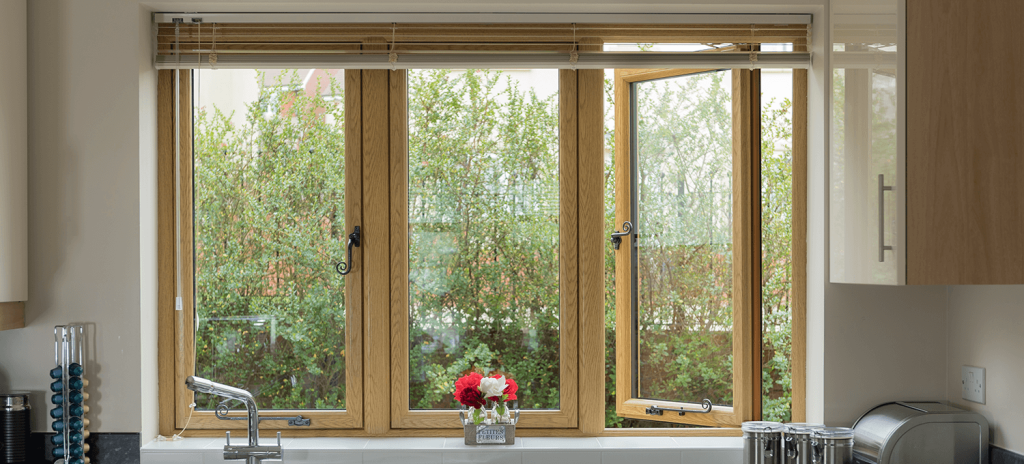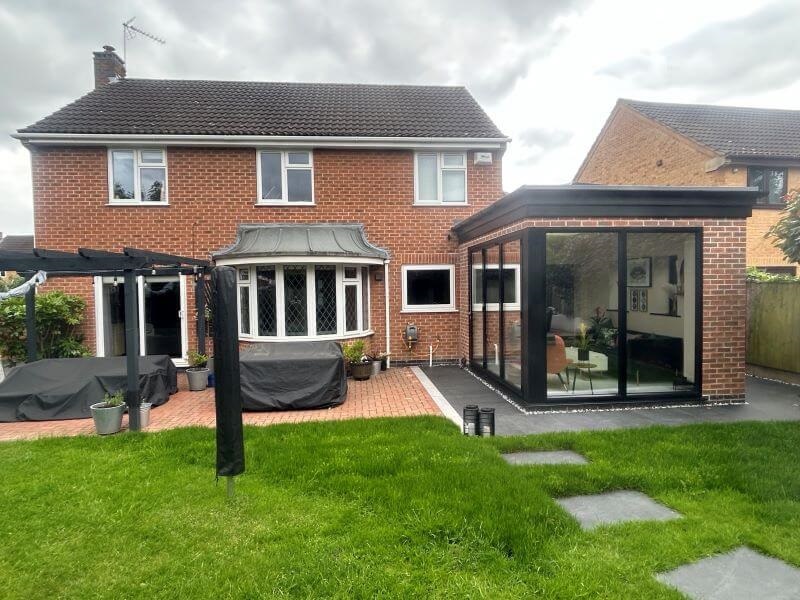Living in a conservation area comes with unique responsibilities, and choosing the right windows is one of the most important decisions you’ll make as a homeowner. Whether you’re in a Victorian terrace in Nottingham or a Georgian townhouse in Derby, your windows need to respect your property’s character whilst providing modern comfort and energy efficiency. When it comes to conservatories, especially solid roof conservatories, the best types of windows are typically double-glazed sash or casement windows that complement the architectural style of your home while maximizing insulation and natural light, ensuring both aesthetic appeal and energy performance.
The good news? Today’s windows for conservation areas combine authentic period styling with cutting-edge performance. From traditional sliding sash windows to timber-effect uPVC options requiring virtually no maintenance, there are heritage-compliant solutions to suit every property and budget.
This guide walks you through everything you need to know, from understanding planning requirements to choosing the perfect style for your home.
Understanding conservation areas and planning requirements
Conservation areas exist to protect the special architectural and historic interest of our towns and villages. If your home sits within one, there are different rules governing what alterations you can make, particularly regarding replacement windows.
Your local authority has designated these areas to preserve their unique character. When it comes to the replacement of windows in conservation areas, permitted development rights (the freedoms that usually allow homeowners to make changes without planning permission) are often restricted. This is especially true for windows on the principal elevation (the front of your house) and any side elevation facing a highway. If you are choosing energy-efficient windows, especially types of glass for your conservatory, it’s important to check with your local planning authority to ensure your options comply with conservation area regulations. Look for windows with good thermal performance, such as double or triple glazing, but make sure their style and materials match the requirements set out for the area. Balancing energy efficiency with permitted window designs helps preserve character while improving comfort and sustainability.
Before ordering your new windows for a new space, you’ll typically need to submit a planning application to your local planning authority. They’ll assess whether your proposed windows respect the character of the conservation area and match the original design of your property. For listed buildings, you’ll also need listed building consent (LBC), which involves even stricter regulations. When considering window materials for conservatories in conservation areas, timber is often the most suitable option as it closely resembles traditional window styles and is generally favored by planning authorities. In some cases, products made from aluminum or uPVC designed to replicate the appearance of original timber frames may also be acceptable, but you should always check local guidelines before making a choice.
Your local authority wants to ensure any replacement of doors and windows maintains the architectural features that give the area its special interest. Many window replacements in conservation areas are approved, particularly when homeowners choose appropriate designs that respect the original windows. The key is selecting window styles that match the period and character of your home.

Windows regularly accepted in conservation areas
Choosing windows for conservation areas doesn’t mean sacrificing comfort or performance. Today’s heritage-compliant windows combine authentic period styling with modern innovations. Most planning authorities look favourably on windows that replicate the original design and architectural features of period properties. When selecting windows for conservatories, it’s helpful to consider the difference between uPVC and aluminium windows. uPVC windows are known for their excellent insulation, affordability, and low maintenance needs, while aluminium windows offer a slimmer profile, enhanced durability, and a sleek, contemporary appearance. With proper insulation, the choice between these materials will often depend on design preferences and the specific requirements of conservation area regulations.
Let’s explore the types of windows most commonly approved for conservation area properties.
Sliding sash windows
Sliding sash windows are the most iconic style for period properties across the UK. These elegant windows feature two panels (sashes) that slide vertically past each other, creating the classic proportions that define Georgian, Victorian and Edwardian architecture.
Modern sliding sash windows replicate these historic designs whilst eliminating problems that plagued older versions. Where original sash windows often jammed or rattled, today’s versions operate smoothly with minimal maintenance.
Our Lifestyle sash windows are available in both timber and uPVC. Our timber sash windows use sustainably sourced European Redwood or Red Grandis hardwood with innovative factory-finished coatings that reduce maintenance whilst preserving the whole team’s natural beauty. They’re suitable for listed buildings and conservation areas.
Our uPVC sash windows from the Rose Collection offer traditional styling with low maintenance. They include trickle vents designed to maintain the classic appearance whilst providing essential airflow required by Building Regulations. Both options incorporate modern security features without compromising style, with key-securable fitch locks and precision workings that eliminate draughts and reduce heat loss.
We offer extensive colour options, from traditional white and cream to authentic heritage shades including golden oak, Irish oak and rosewood.

Residence Collection windows
The Residence Collection represents premium timber-effect uPVC windows designed to replicate 19th-century designs, making them excellent for conservation areas. We offer Residence 7 and Residence 9 collections with timber-effect flush sash options.
The Residence 9 features a 100mm frame depth that effortlessly replicates Victorian and Georgian timber flush sash windows, whilst Residence 7 offers flush frames on both sides with a 75mm frame. All glass sightlines are measured to be perfectly equal, providing balanced proportions that characterise period architecture. When considering conservatory windows in the UK, prices can vary depending on the size of the conservatory, style, and material quality. Typically, conservatory windows start from around £300 to £600 per window, with higher-end options or bespoke designs costing more.
Optional traditional touches include classic Georgian bars, weatherbars, different glazing beads and period handles such as monkey tail and pearl drop window handles.
These windows deliver exceptional performance, achieving the highest energy ratings (A++) and U-values as low as 0.74 W/m²K, meaning they’re incredibly effective at keeping heat inside your home, significantly lowering heating bills. The robust design includes optional steel reinforcements, secure multi-point locking and extra security features.
Maintenance is minimal, just wipe with warm soapy water. They won’t warp, flake or discolour. Every window is covered by a comprehensive ten-year guarantee.
We offer these windows in heritage colours including Cotswold green, painswick, Cotswold biscuit, English oak, clotted cream and chalk white. The Residence Collection accommodates double and triple glazing with optional Pilkington Optiphon™ Acoustic laminated glazing for noise reduction, particularly valuable near busy roads.

Timber windows
For many conservation areas and particularly listed buildings, genuine timber windows remain the gold standard. There’s something wonderfully authentic about real wood, the natural grain and traditional joinery that matches original designs.
Our premium George Barnsdale timber windows use 100% sustainably sourced timber, making them excellent for high-end installations on heritage properties. These factory-finished engineered windows require minimal maintenance thanks to innovative coatings, yet retain timber’s natural long lifespan and beauty. For bespoke conservatory windows, there are several design options available, including various glazing styles, sash or casement configurations, and custom finishes, allowing the windows to complement both traditional and contemporary conservatory designs.
Available in European Redwood (softwood) and Red Grandis (hardwood), they offer impressive thermal performance and strong security features. All come with key-securable locks and draught-proof seals to keep homes warm and secure, preventing warm air from escaping. We provide an extensive range of painted finishes and stains, from traditional white to authentic heritage colours including oak, mahogany, walnut and pebble grey.
Timber windows from Lifestyle come with a 30-year guarantee, with all products from FSC-accredited, sustainably managed forests. Like our sash windows, they’re available with optional Pilkington Optiphon™ Acoustic glazing.

uPVC windows with woodgrain finish
For those who want timber’s authentic appearance without maintenance demands, our uPVC windows with woodgrain finishes are ideal. These casement, tilt & turn, and sliding sash windows deliver the traditional look of timber with modern performance benefits, the wooden appearance often making them eligible for conservation areas.
Our uPVC casement windows feature sleek, symmetrical designs that create balanced, traditional aesthetics suitable for period properties. They boast incredible energy ratings of A+21, meaning exceptional heat retention and lower energy bills. Easy to clean and virtually maintenance-free, they’ll last decades without warping, flaking or discolouring.
uPVC window frames are fitted for snug fits with multi-point locking ensuring security and protection. We offer colours including timber-effect finishes such as golden oak, Irish oak, rosewood, hardwood and oak. Optional extras include Georgian bars (between panes or outside for authentic texture) and triple glazing for unrivalled energy efficiency.
Every uPVC window is covered by a ten-year comprehensive guarantee on materials and workmanship.
What’s the difference between planning permission and listed building consent?
Planning permission is required for certain alterations in conservation areas and confirms your proposed changes comply with local planning policies and respect the area’s character. Listed building consent (LBC) is specifically required for listed buildings and covers any alteration that affects the building’s character, even if it wouldn’t normally need planning permission. Some alterations need both. If you are considering installing conservatory roof windows, keep in mind that these can significantly improve both ventilation and natural light within the space. However, installing roof windows on a listed building or within a conservation area will likely require both planning permission and listed building consent, as they alter the appearance of the structure and may affect features like a pitched roof.

Frequently asked questions
Do all windows in conservation areas need planning permission?
No. Permitted development rights still apply for some alterations, particularly on rear elevations and non-principal sides. However, replacements on the front (principal elevation) typically require planning permission. Check with your local planning authority early.
Can I use aluminium windows in a conservation area?
Aluminium windows are less commonly approved than timber or uPVC alternatives, as they don’t typically replicate the appearance of original windows. However, some conservation areas may approve them for contemporary properties or specific situations. Always check with your local authority first.
How long does the planning application process take?
Most planning authorities aim to determine applications within 8 weeks, though this varies. Submitting a clear application with good photographs and detailed information about your proposed windows helps speed things up.
Are double glazed windows acceptable in conservation areas?
Yes. Double glazing is now standard and widely accepted because modern double-glazed windows can replicate the appearance of original single-glazed designs. Your local authority prioritises matching the original design and proportions rather than the glazing type.
Will timber windows damage a listed building?
No. In fact, timber windows are often preferred for listed buildings as they replicate original designs most authentically. Modern timber windows with innovative coatings require minimal maintenance whilst preserving the authentic appearance.

Who are Lifestyle Windows?
We’re a family-run business based in Ilkeston, Derbyshire, with over 25 years’ experience installing windows, doors, conservatories and garden rooms across Derbyshire, Nottinghamshire and Leicestershire. Our dedicated team of in-house installers brings genuine expertise in uPVC, timber and aluminium double glazing products.
We hold status, CPA Insurance Backed Guarantees, FENSA certification and a CPA Customer Care Award. Every product comes with a lifetime warranty, and we offer a no-pressure approach to sales, we’re here to help you make informed decisions about what’s right for your home.
We specialise in heritage-compliant installations and understand the specific challenges of conservation areas and listed buildings. Our showroom in Nottinghamshire lets you see our products firsthand, and we regularly provide customers with details of existing installations so you can see our quality in real-world settings.
**Ready to find the perfect windows for your conservation area property? Contact Lifestyle Windows today for a free, no-obligation quote. Call us on 0800 783 6502

